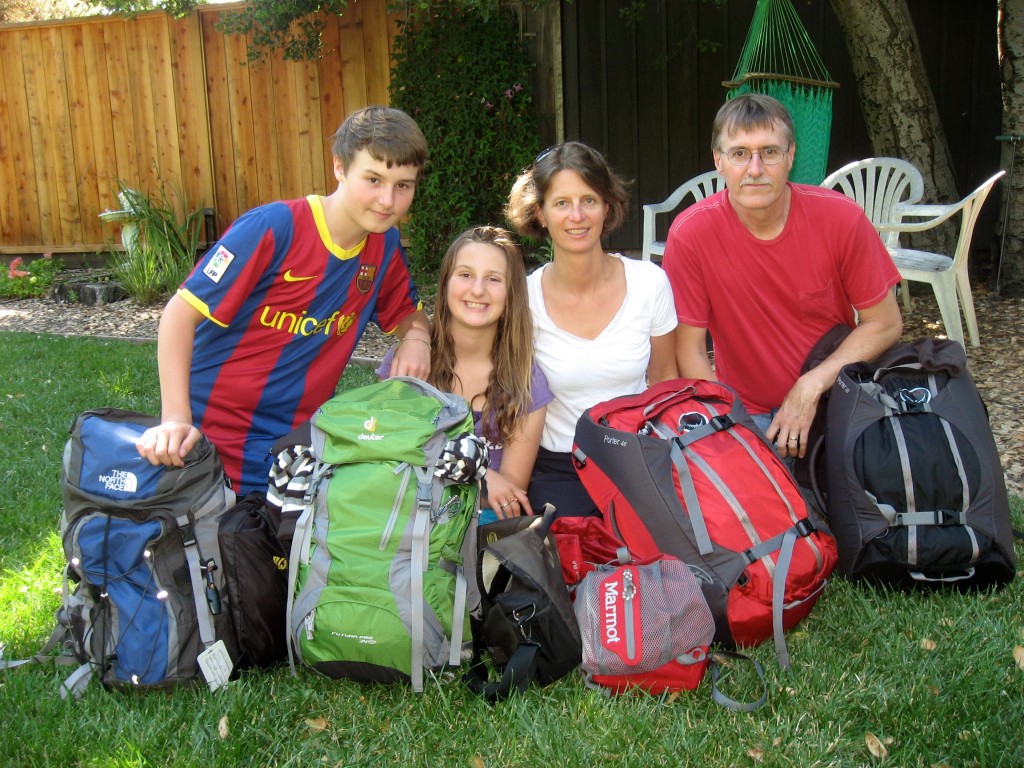 When we started our trip Bill and I were determined not to buy souvenirs. We spent a lot of time before we left clearing our home of junk. We had no desire to refill it with stuff of little meaning from our trip, and we knew almost everything sold overseas could also be found at home. We kept our luggage to only one backpack each. Anything we bought would only add to the weight we had to carry on our back. We thought this would be a true disincentive to shopping. But, of course, we did buy things. We didn’t shop often for souvenirs. We shopped mostly for things we needed. We couldn’t bring everything for year in our backpacks. Weather changed, things broke, and pretty things caught our eyes. We had adventures searching for the items, finding the items, buying the items, and even using the items. While shopping we had to struggle with foreign language, with foreign money, and with foreign culture. The things we brought home evoke stories of adventures and discoveries. These are the true souvenirs.
When we started our trip Bill and I were determined not to buy souvenirs. We spent a lot of time before we left clearing our home of junk. We had no desire to refill it with stuff of little meaning from our trip, and we knew almost everything sold overseas could also be found at home. We kept our luggage to only one backpack each. Anything we bought would only add to the weight we had to carry on our back. We thought this would be a true disincentive to shopping. But, of course, we did buy things. We didn’t shop often for souvenirs. We shopped mostly for things we needed. We couldn’t bring everything for year in our backpacks. Weather changed, things broke, and pretty things caught our eyes. We had adventures searching for the items, finding the items, buying the items, and even using the items. While shopping we had to struggle with foreign language, with foreign money, and with foreign culture. The things we brought home evoke stories of adventures and discoveries. These are the true souvenirs.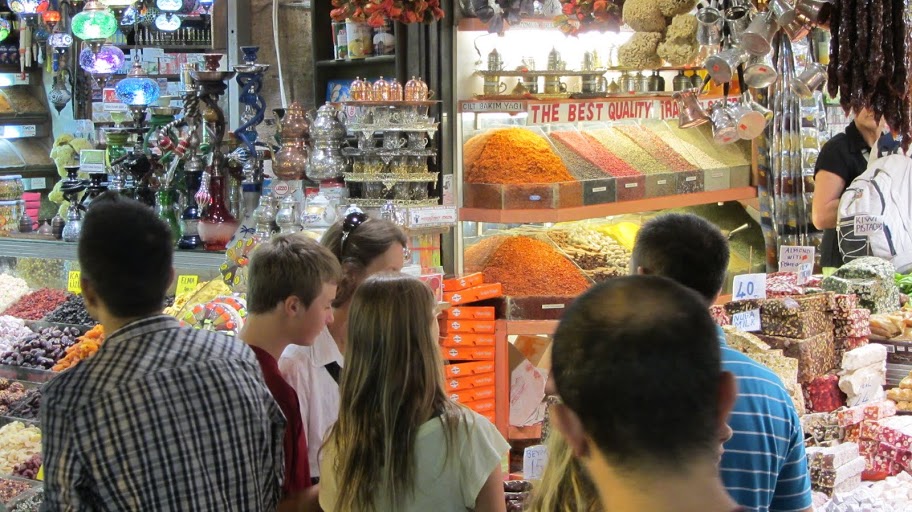

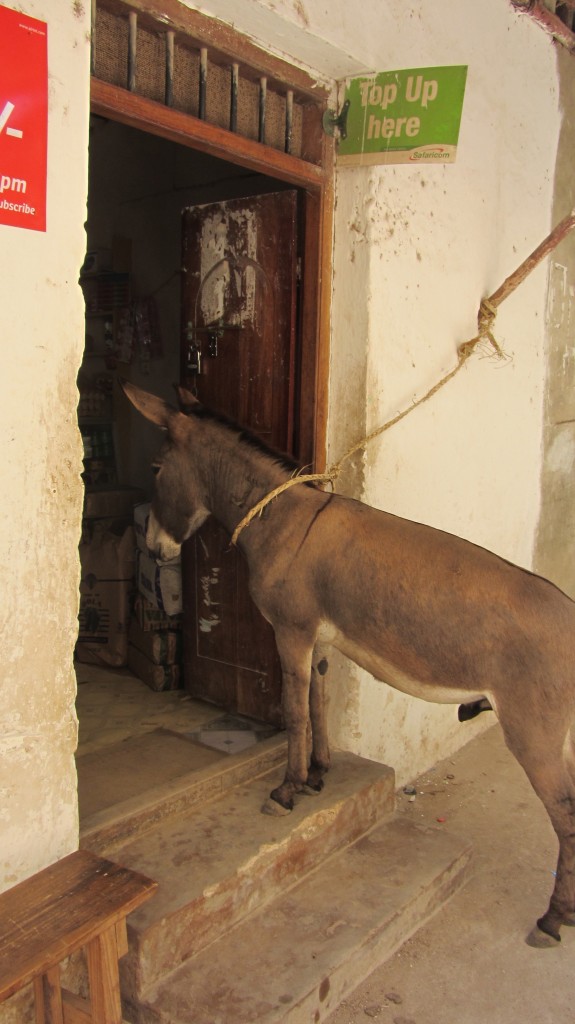 Glasses from India: While we were staying at the orphanage in Haridwar I broke my glasses. In two. So I went to an optometrist recommended by all the Westerners, Vishal’s, right across the street from Vishal’s Megamart.
Glasses from India: While we were staying at the orphanage in Haridwar I broke my glasses. In two. So I went to an optometrist recommended by all the Westerners, Vishal’s, right across the street from Vishal’s Megamart. 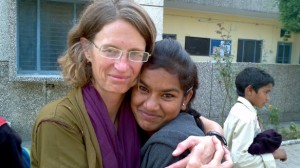 My time with Vishal consisted of a quick refraction of my eyes, a small selection of frames, and a wait of less than one hour. I paid him all of $20, and I had my new glasses. They weren’t exactly handsome, but I could see clearly. In fact, a couple of weeks later as the moon was setting in the night sky of New Delhi I clearly saw two moons. It turned out that these new glasses didn’t work very well for looking at things with both eyes at the same time. I would often have to close one eye to really tell where things were.
My time with Vishal consisted of a quick refraction of my eyes, a small selection of frames, and a wait of less than one hour. I paid him all of $20, and I had my new glasses. They weren’t exactly handsome, but I could see clearly. In fact, a couple of weeks later as the moon was setting in the night sky of New Delhi I clearly saw two moons. It turned out that these new glasses didn’t work very well for looking at things with both eyes at the same time. I would often have to close one eye to really tell where things were. 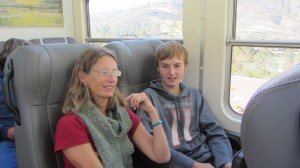 I found hiking the steep hills in Nepal and Peru difficult. I couldn’t tell where my feet would land. Now, of course, I don’t wear the $20 glasses. I have a new pair with progressive lenses worth hundreds of dollars instead. But I’m keeping my Indian glasses. They’re in my dresser drawer with other old pairs of glasses, a few necklaces, and old photos. Over the coming years I’ll stumble across them as I look for random things within that junk drawer and I’ll be reminded of seeing twice as many things as were really there throughout my trip.
I found hiking the steep hills in Nepal and Peru difficult. I couldn’t tell where my feet would land. Now, of course, I don’t wear the $20 glasses. I have a new pair with progressive lenses worth hundreds of dollars instead. But I’m keeping my Indian glasses. They’re in my dresser drawer with other old pairs of glasses, a few necklaces, and old photos. Over the coming years I’ll stumble across them as I look for random things within that junk drawer and I’ll be reminded of seeing twice as many things as were really there throughout my trip.
Shirt from Turkey: The shirt is gone now. It went in the trash even before we got home. 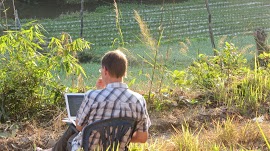 We only have pictures left. A lot of them. When we first got to Turkey, Bill wanted a shirt to wear in the heat. He had a backpack full of shirts that just weren’t right: “Breathable” shirts from REI that made him sweat and T-shirts that weren’t a good style in a foreign land. He wanted some shirts that would be comfortable and handsome. It turns out old fashioned cotton worked best in the hot, humid weather of Turkey in August, as well as Kenya in September, Cambodia in February, and Mexico in June. He started his search in the stores of Antalya, Turkey. He got off the plane and then hopped from store to store along Ataturk Avenue. The stores blasted techno-pop catering to the young. Most shirts were too small. This was true almost everywhere. Americans tend to be larger than the rest of the world. Finally Bill found a light cotton, blue plaid, extra large, short sleeved shirt on sale for $10. He loved it. In every tropical town we visited he searched for another shirt just like it.
We only have pictures left. A lot of them. When we first got to Turkey, Bill wanted a shirt to wear in the heat. He had a backpack full of shirts that just weren’t right: “Breathable” shirts from REI that made him sweat and T-shirts that weren’t a good style in a foreign land. He wanted some shirts that would be comfortable and handsome. It turns out old fashioned cotton worked best in the hot, humid weather of Turkey in August, as well as Kenya in September, Cambodia in February, and Mexico in June. He started his search in the stores of Antalya, Turkey. He got off the plane and then hopped from store to store along Ataturk Avenue. The stores blasted techno-pop catering to the young. Most shirts were too small. This was true almost everywhere. Americans tend to be larger than the rest of the world. Finally Bill found a light cotton, blue plaid, extra large, short sleeved shirt on sale for $10. He loved it. In every tropical town we visited he searched for another shirt just like it. 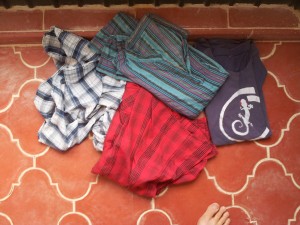 In Lamu, Kenya, he found an African cut, pullover shirt as well as a Tusker beer t-shirt. Neither reached the same status as his Turkish shirt. Our vikram driver in Kochi, India, drove us from clothing shop to clothing shop. Bill bought several shirts, his favorite a red plaid. He used all his new shirts but the Turkish shirt was the first one he grabbed when the laundry was done. By the time we were in Mexico the light blue plaid shirt was a dull grey plaid shirt, with a few Jackson-Pollock-like stains scattered all over. Months of wearing days on end, traveling through dusty destinations, and trying to hand wash out the grime had trashed the thing. We don’t have the shirt anymore, but we have plenty of pictures. When we envision Bill over the past year, he is wearing that shirt. The memory will never fade.
In Lamu, Kenya, he found an African cut, pullover shirt as well as a Tusker beer t-shirt. Neither reached the same status as his Turkish shirt. Our vikram driver in Kochi, India, drove us from clothing shop to clothing shop. Bill bought several shirts, his favorite a red plaid. He used all his new shirts but the Turkish shirt was the first one he grabbed when the laundry was done. By the time we were in Mexico the light blue plaid shirt was a dull grey plaid shirt, with a few Jackson-Pollock-like stains scattered all over. Months of wearing days on end, traveling through dusty destinations, and trying to hand wash out the grime had trashed the thing. We don’t have the shirt anymore, but we have plenty of pictures. When we envision Bill over the past year, he is wearing that shirt. The memory will never fade.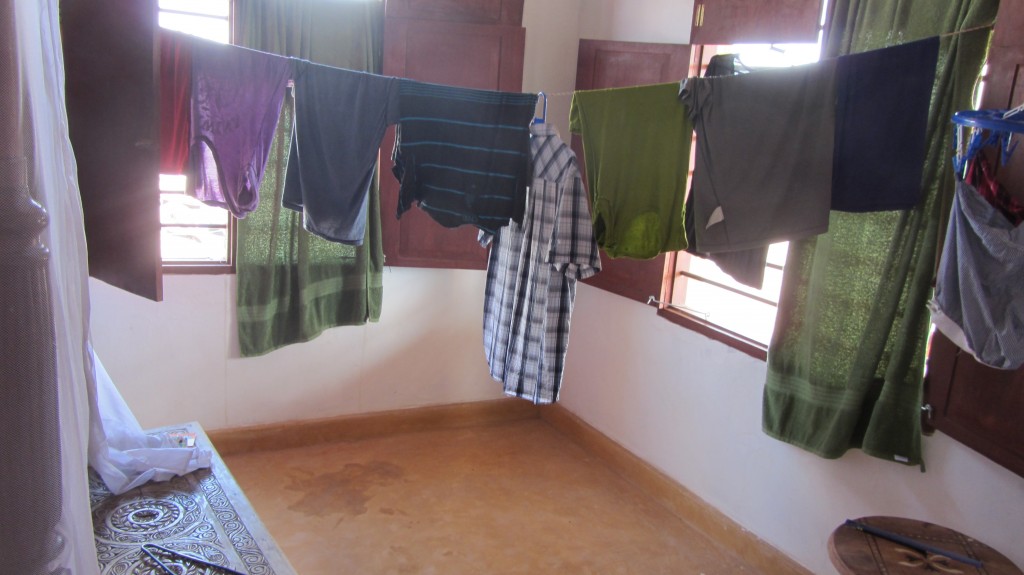
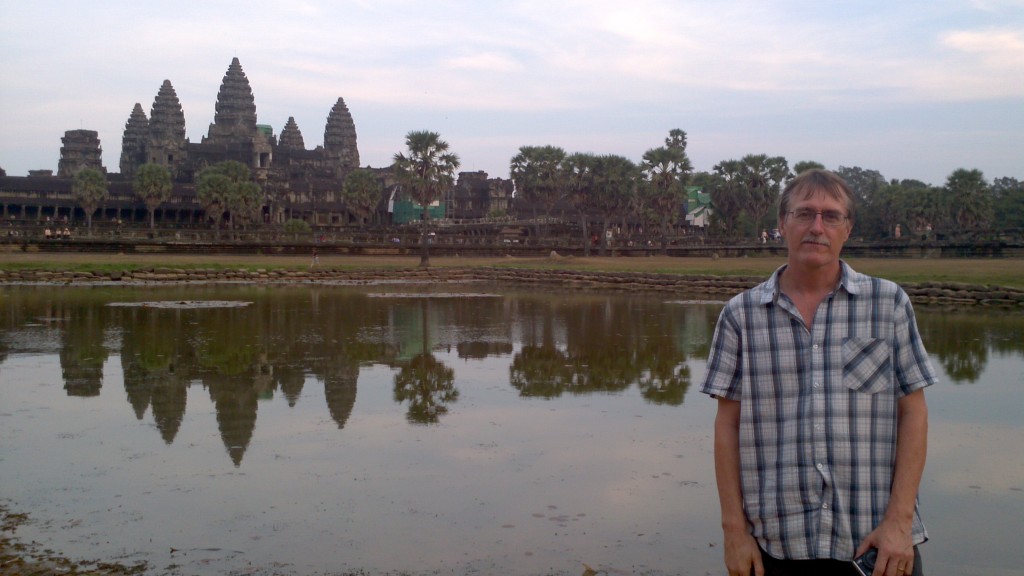
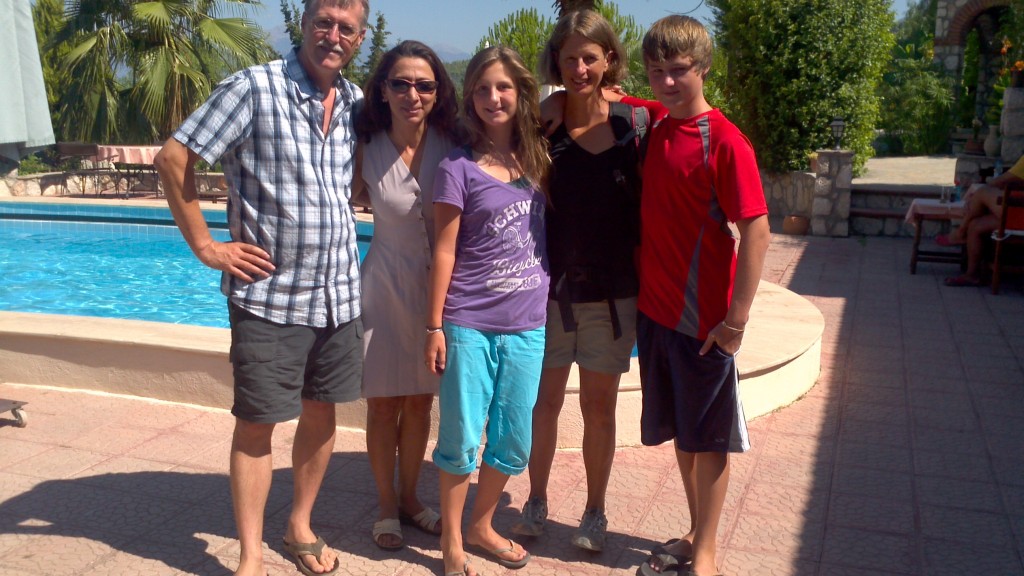
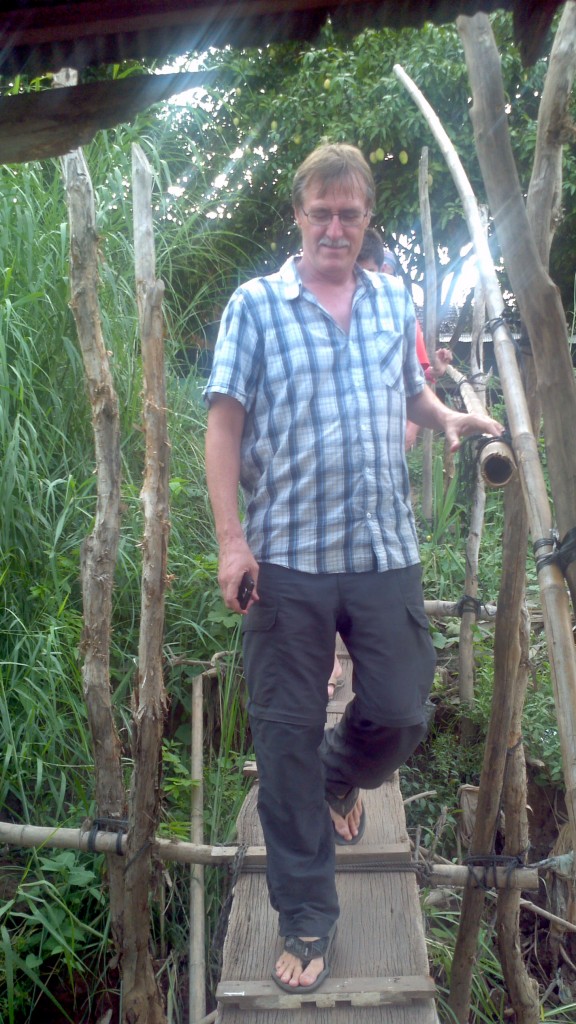
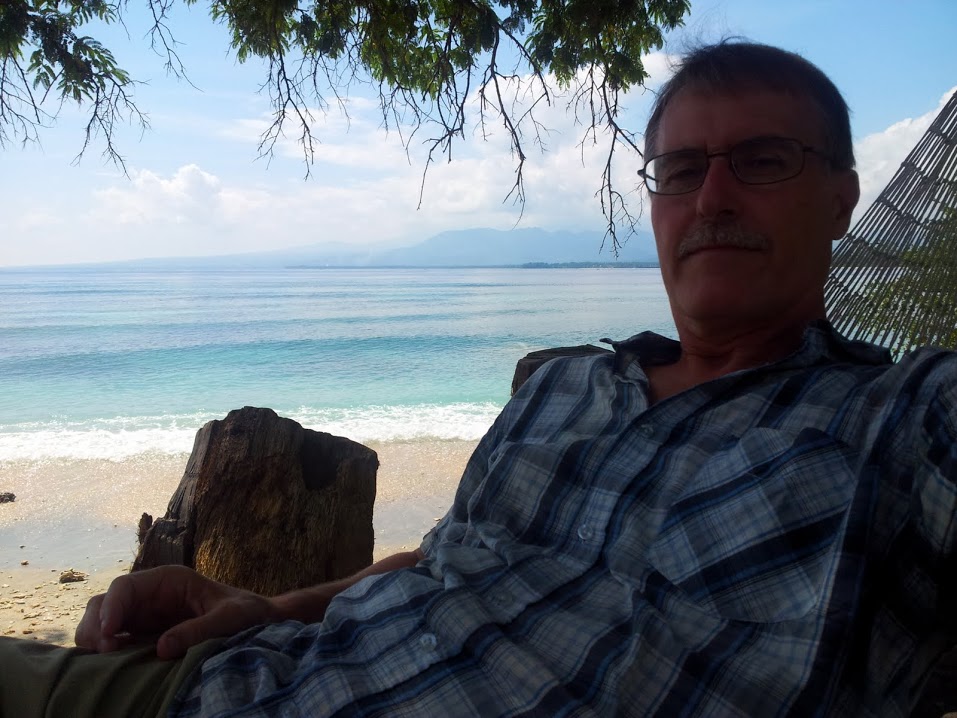 Long green scarf: When we visited Singapore it was the end of April, and it was hot.
Long green scarf: When we visited Singapore it was the end of April, and it was hot. 
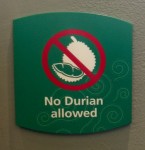 We were sweltering in shorts and t-shirts while riding what seemed like the world’s largest escalator, eating designer popsicles, and trying durian on our last day in SE Asia (what we had tried to avoid in our four months of smelling it everywhere). On Bill’s birthday we took 40 hours and flew to Buenos Aires. It was autumn in Argentina. We weren’t ready for the cold snap that was waiting for us. We only had light sweaters and light pants. The kids continued to wear their flipflops. We were cold. And we had to go outside and tour the city.
We were sweltering in shorts and t-shirts while riding what seemed like the world’s largest escalator, eating designer popsicles, and trying durian on our last day in SE Asia (what we had tried to avoid in our four months of smelling it everywhere). On Bill’s birthday we took 40 hours and flew to Buenos Aires. It was autumn in Argentina. We weren’t ready for the cold snap that was waiting for us. We only had light sweaters and light pants. The kids continued to wear their flipflops. We were cold. And we had to go outside and tour the city.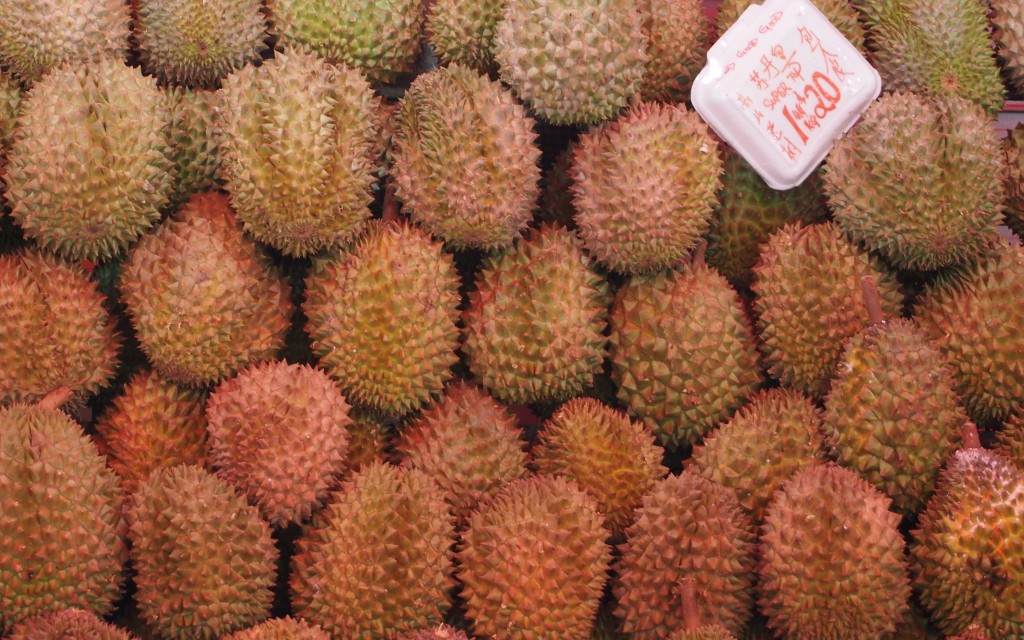
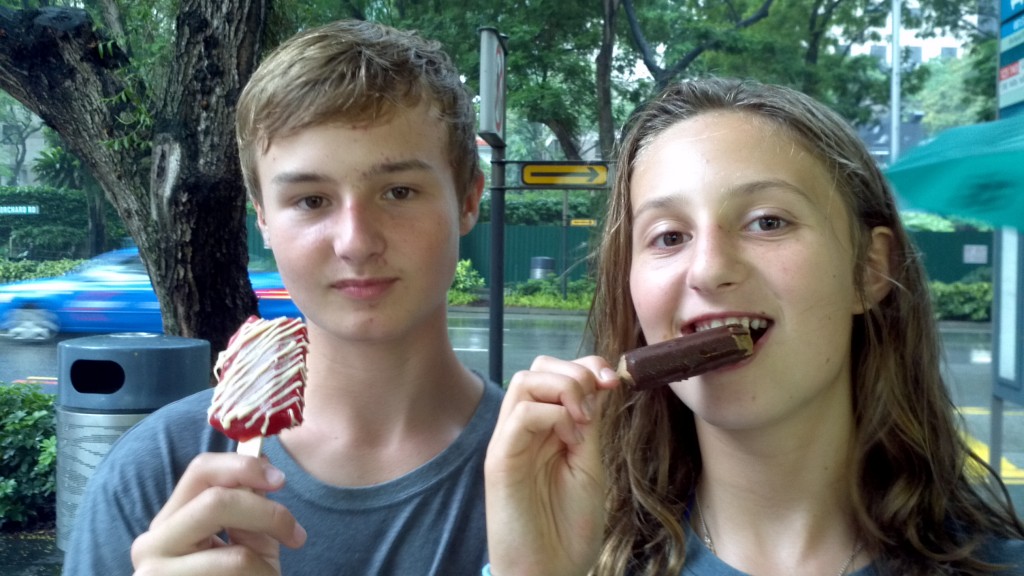
Buenos Aires is known for its weekly fairs. In the San Telmo neighborhood the fair is known for its antiques and tango dancers. The one in the rich neighborhood of Palermo is also full of antiques. In the Belgrano neighborhood is a market full of gourmet foods. But I was most attracted to was the Feria de Mataderos. It’s in the meat packing district and is filled with guachos, horses, and dancers. It took us an hour to get there by city bus.  We started in the upper class neighborhood of Recoleta along the waterfront. This neighborhood was beautiful. It looked like a cross between Manhattan and Paris with old stone buildings faced with balconies and carved eaves. As the bus headed southwest, the buildings became less stately and more homely.
We started in the upper class neighborhood of Recoleta along the waterfront. This neighborhood was beautiful. It looked like a cross between Manhattan and Paris with old stone buildings faced with balconies and carved eaves. As the bus headed southwest, the buildings became less stately and more homely. 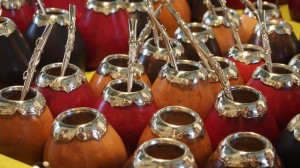 The buildings were abandoned and tagged with graffiti. It started to look a lot more like Oakland than Paris. When we finally got off the bus we noted the meat packing plants lining the street were all closed on Sunday. But across the street people were crowding around numerous stalls of vendors selling their wares. There were vendors of maté, the herbal drink of Argentina, and maté mugs made from gourds trimmed with silvery metals. Butchers were grilling steaks and sausages. Artists were selling photos and paintings. And knitters were selling hats, mittens, and scarves.
The buildings were abandoned and tagged with graffiti. It started to look a lot more like Oakland than Paris. When we finally got off the bus we noted the meat packing plants lining the street were all closed on Sunday. But across the street people were crowding around numerous stalls of vendors selling their wares. There were vendors of maté, the herbal drink of Argentina, and maté mugs made from gourds trimmed with silvery metals. Butchers were grilling steaks and sausages. Artists were selling photos and paintings. And knitters were selling hats, mittens, and scarves. 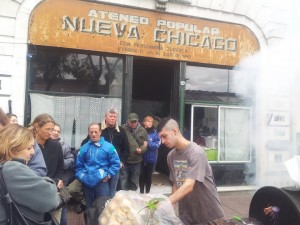 For $10 I was able to wrap a long, green, soft wool scarf around my neck and fend off the cold as I went to watch the dancers perform. Up on the stage men and women danced in traditional gaucho outfits in groups and pairs. As they left the stage the loud speakers continued with local music, the onlookers cleared a space, and couples from the crowd took their places in rows for more Argentinian folk dancing. For one dance they all brought out their scarves of white or pale blue, the colors of the Argentinian flag, to wave in the air as they danced. When the music changed to a tango the couples held each other closely, the women on the their tiptoes, swooshing and dipping, avoiding each other while all dancing in a counter clockwise direction. I came to believe that Buenos Aires is a city where everyone knew the dance steps.
For $10 I was able to wrap a long, green, soft wool scarf around my neck and fend off the cold as I went to watch the dancers perform. Up on the stage men and women danced in traditional gaucho outfits in groups and pairs. As they left the stage the loud speakers continued with local music, the onlookers cleared a space, and couples from the crowd took their places in rows for more Argentinian folk dancing. For one dance they all brought out their scarves of white or pale blue, the colors of the Argentinian flag, to wave in the air as they danced. When the music changed to a tango the couples held each other closely, the women on the their tiptoes, swooshing and dipping, avoiding each other while all dancing in a counter clockwise direction. I came to believe that Buenos Aires is a city where everyone knew the dance steps.
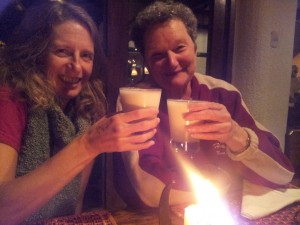
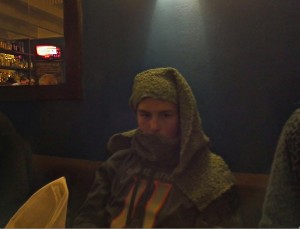 Peru was our next stop after Argentina. We flew to the ancient Incan capitol of Cuzco, celebrated my 50th at Machu Picchu, danced to pan flutes at Lake Titicaca, and went hiking in Cañon de Colca. We traveled as high as 16,000 feet, and I was once again cold. We all were. I pulled out my green scarf for anyone who needed it, and I remembered the dancing as well as the sausages and maté. Now, in the winter in Oakland, as I wrap it around my neck the soft, green scarf takes me to the Feria de Mataderos and the Argentinian dance steps. Just as a souvenir is supposed to do.
Peru was our next stop after Argentina. We flew to the ancient Incan capitol of Cuzco, celebrated my 50th at Machu Picchu, danced to pan flutes at Lake Titicaca, and went hiking in Cañon de Colca. We traveled as high as 16,000 feet, and I was once again cold. We all were. I pulled out my green scarf for anyone who needed it, and I remembered the dancing as well as the sausages and maté. Now, in the winter in Oakland, as I wrap it around my neck the soft, green scarf takes me to the Feria de Mataderos and the Argentinian dance steps. Just as a souvenir is supposed to do.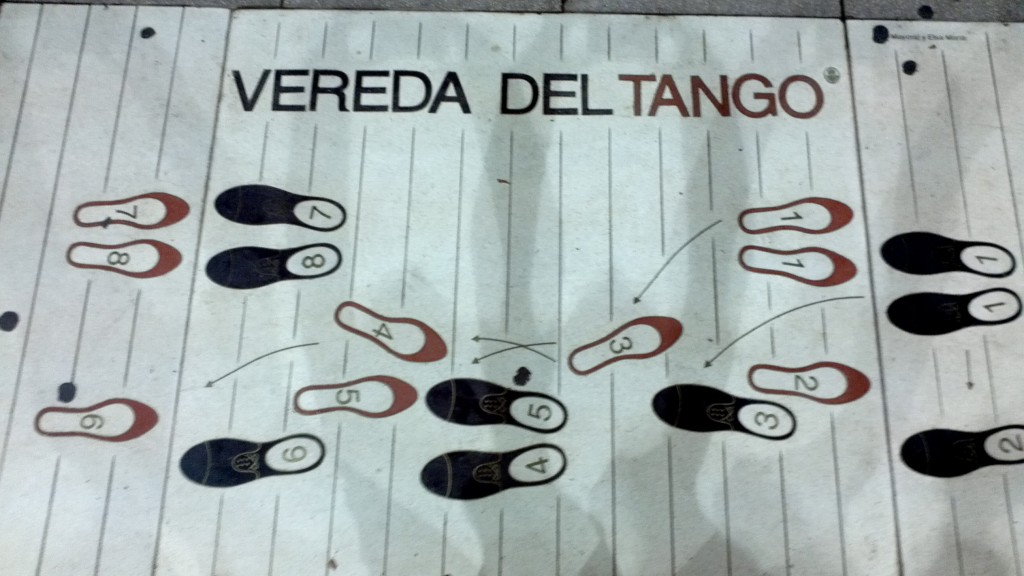

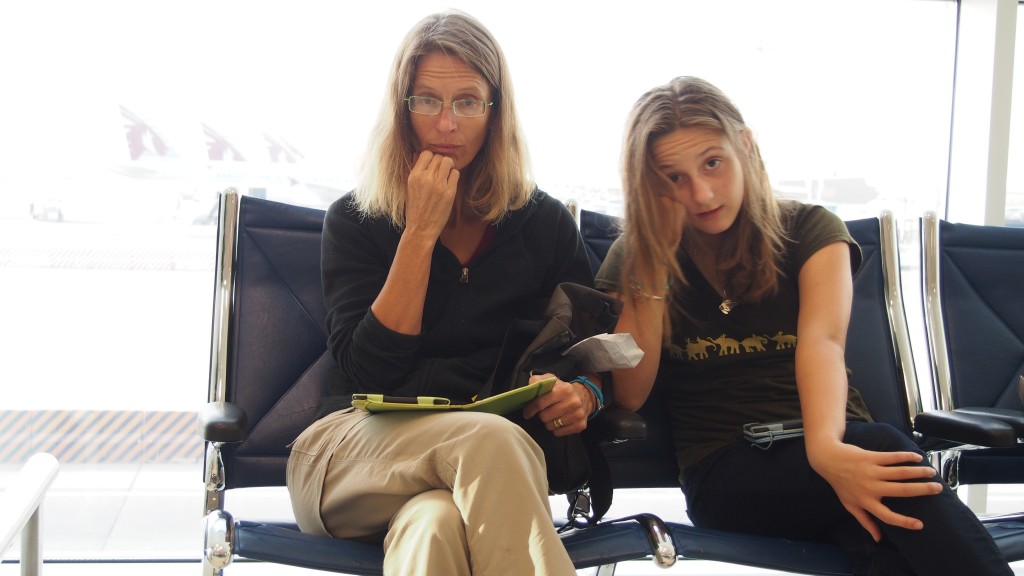
7 Responses to Souvenirs